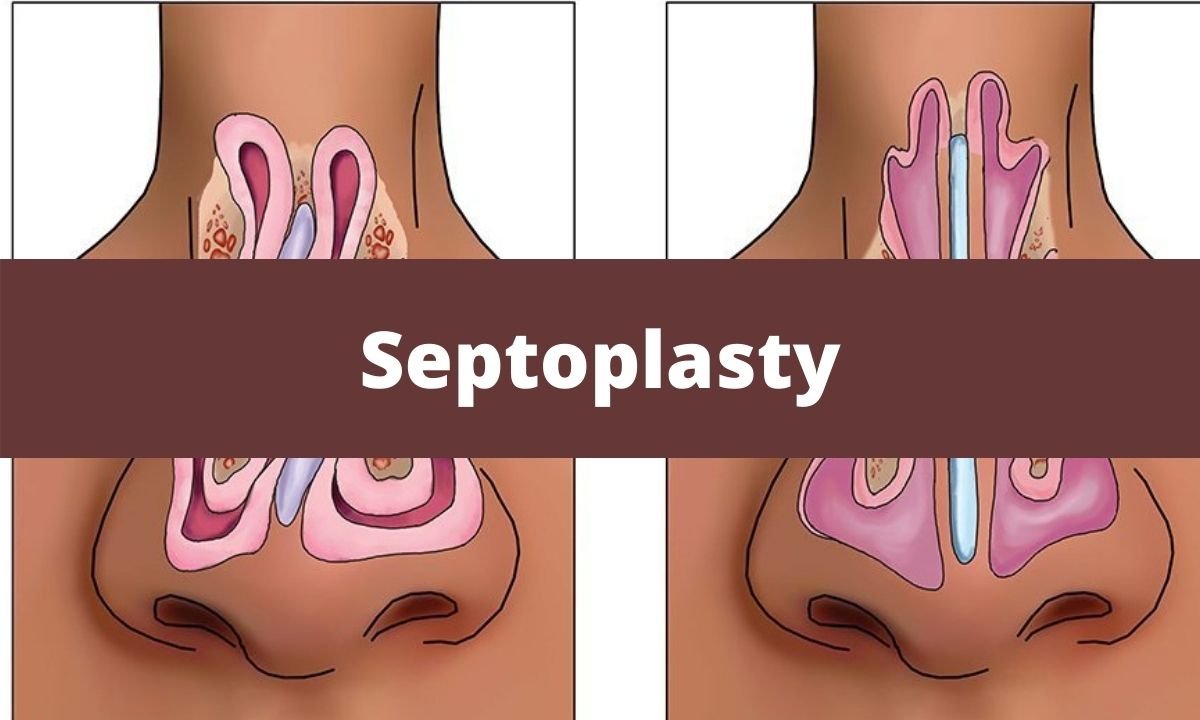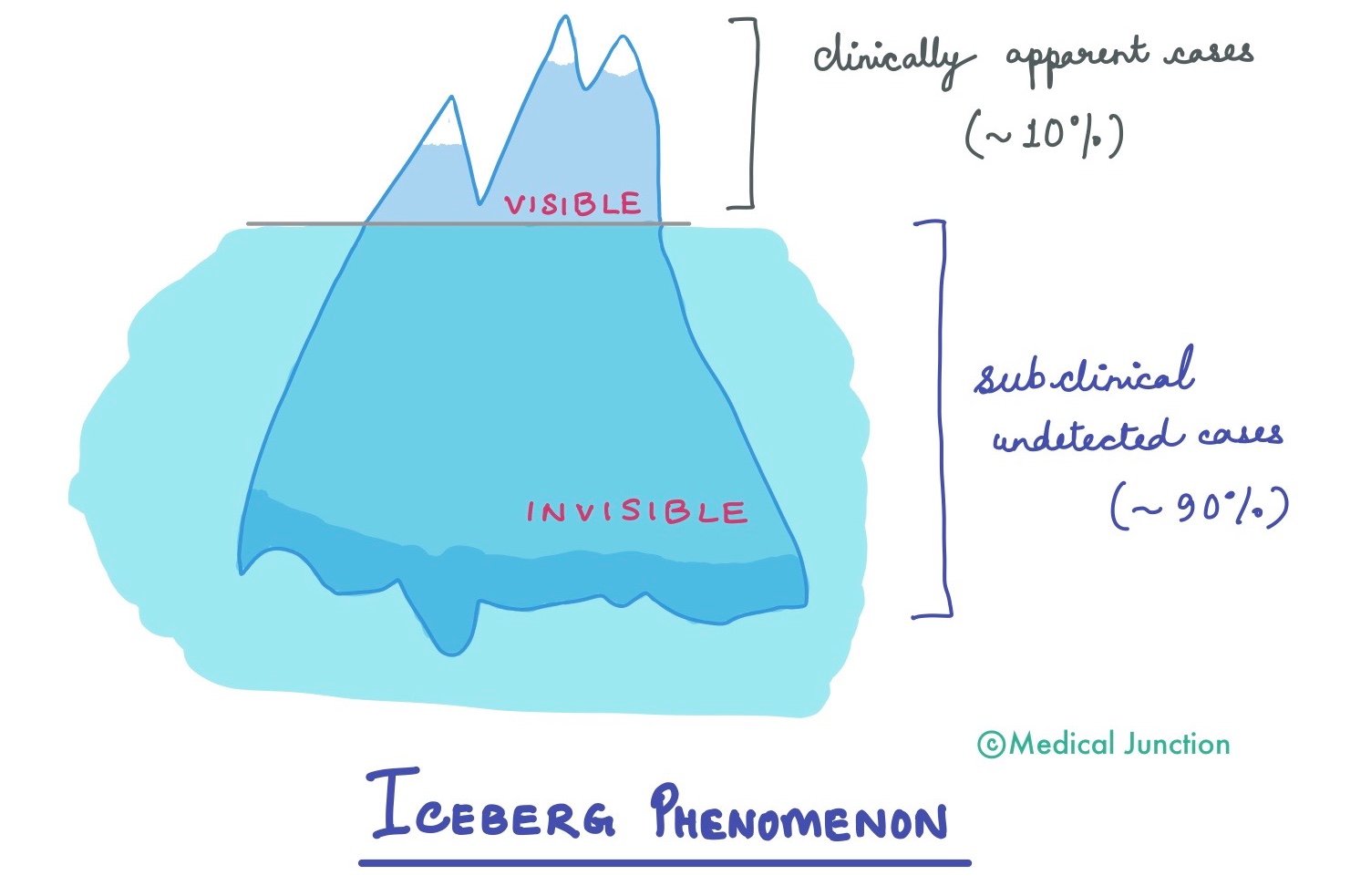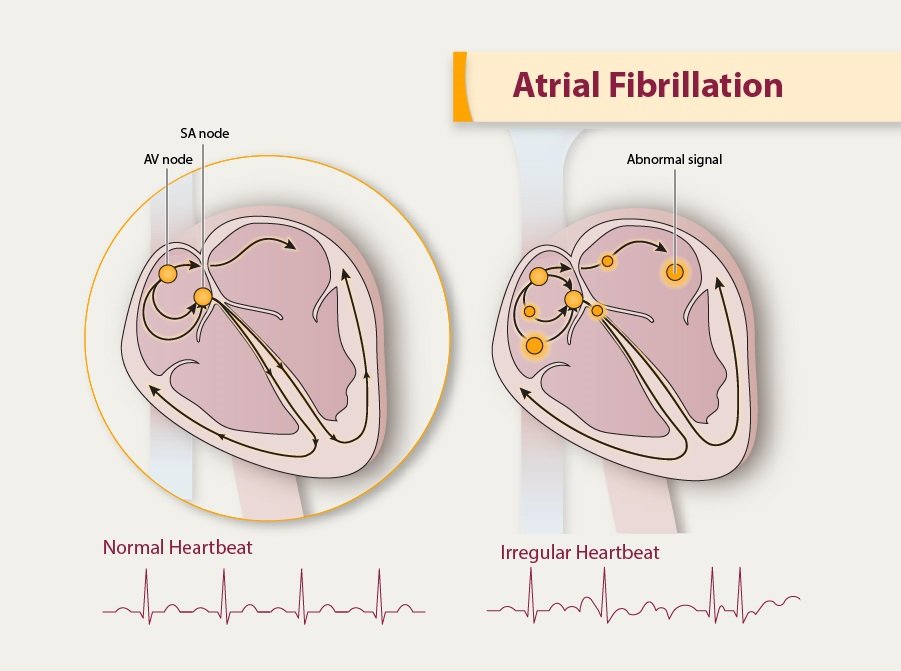Anatomy is the sole of 1st year MBBS and also it’s a vast subject. Most of the students study this subject for the whole year, giving less time for other subjects like Physiology and Biochemistry. But keep in mind that every subjects is important. Sometimes reading this whole thing you may feel exhausted and bored. So how to cope up with this? Remember there is no one in your class who can engulf the whole syllabus and score a good marks. All you have to do is to read the subject in a technical way. That means you have to point out the important topics which are usually coming in previous exams and reading them deeply. And this will generate a good gross concept of anatomy. And not only that, for Anatomy you have to focus on the anatomical images from various good books like Netter’s Anatomy (which I prefer the most). Also let’s take help of the internet. Search images of different body organs and also watch videos from Youtube. All you need is a overall concept of Anatomy and this will make you confident to start reading the 1st line of the chapter.
So the rules you have to follow before start reading anatomy without any stress are here (Must read) :
- Be confident. Avoid negative influences. Take suggestions from your immediate seniors.
- Study the previous year question papers and find out important topics. Mark those in your book.
- Anatomy is a visual science. So look at the pictures, diagrams and practice drawing during reading the particular topic.
- Always keep a good atlas book (I suggest Netter’s Atlas) beside you. It will help you a lot.
- Stick to one good book for reading and one atlas for drawing diagrams.
- After reading the topics discuss with your friends. It will help to memorize the topic.
- Take help of the google images and Youtube for better understanding.
- Always try to relate the anatomical names with the region (Like Sternoclavicular joint – It means joint between sternum and clavicle).
- Few students take help of mnemonics. But I suggest to use mnemonics only for few topics (like brachial plexus). As there are a ton of mnemonics, it will be harder to memorize that too. Try to make your own mnemonics if you want to.
- Write down point wise and don’t spell wrong (specially for anatomy). It will help you to score good marks.
Here in this post we try to put the Important topics of Anatomy which not only save your valuable times but also give you an idea about the questions ask in the exams. Read all of these followings for short and long questions. Because short notes may come as a long questions. So we don’t divide the topics as short/long questions.
UPPER LIMB
For the upper limb important topics, first you have to study few bones, joints and muscles.
Bones
Read Definition, Ossification, Anatomical position, Parts, Attachments (Origin/Insertion), Clinical anatomy of fractured bones, Arterial supply of these bones below :
- Clavicle
- Scapula
- Humerus
- Radius
- Ulna
Joints
Read Definition, Types, Articular surfaces, Ligaments, Relations, Nerve Artery Vein, Movements of these joints below :
- Shoulder
- Elbow joint (Also read anastomosis around elbow joint)
- Carpometacarpal joint
Muscles
For muscles we have to read only origin/insertion and nerve supply. The important muscles are :
- Deltoid
- Serratus anterior
- Subclavius
- Teres major/minor
- Pectoralis major/minor
- Latissimus dorsi
Important Topics
- Lymphatic drainage of Breast. ★
- Anatomy of breast and krukenberg tumor.
- Clavipectoral fascia. ★
- Serratus anterior muscle – Short Note
- Deltoid muscle – Attachments and nerve supply.
- Brachial plexus – Def, Components, Clinical. ★
- Erb’s paralysis and Klumpke’s paralysis. ★
- Branches of axillary artery. v
- shoulder joint – Type and articular surfaces, Capsule and ligaments, Movements and muscles producing them, Applied aspect. v
- Triangle of auscultation.
- Rotator cuff and their nerve supply. ★
- Cubital fossa – contents. ★
- Carpal tunnel syndrome – SN ★
- Anatomical snuff box – SN
- Palmer aponeurosis – SN
- Axilla boundaries and contents.
- Dupuytren’s contracture – SN ★
- Flexor retinaculum (Structure passing) – SN ★
- Palmer aponeurosis – SN ★
- Mid palmar spaces – SN
- Arterial anastomosis around elbow – (For conecpt/ look atlas)
- Radial/Ulner/Median Nerve – Origin and root value, Course, Distribution/structures supplied, Applied anatomy. (Any of them come in every exams) ★
- Musculocutaneous nerve
- Brachial/Radial artery branches. ★
- Elbow joint.
- Interrossei.
- Flexor digitorum profundus. ★
- Branches of 3rd part of axillary artery. ★
- Muscles responsible for abduction at shoulder joint.
- Wrist drop – SN
- Claw hand – SN ★
- Tennis Elbow – SN
- Students Elbow – SN ★
- Claw hand – SN ★
- Scapular anastomosis
LOWER LIMB
Before start reading for the important topics it’s important to know the basics of lower limb bones, joints and muscles
Bones
- Femur
- Tibia
- Fibula
- Hip bone
Joints
- Knee joint
- Hip joint
- Ankle joint
Muscles
- Dartos muscle
- Adductor magnus
- Hamstrings muscle
Important Topics
- Hip joint – Types, Relations, Ligaments, Movements, Associated muscles, Applied anatomy ★
- Arches of foot (Medial longitudinal arch most imp) ★
- Sciatic nerve – Root value, Distribution, Course, Branches, Applied anatomy
- Knee joint -SN
- Femoral triangle – SN ★
- Femoral sheath and Femoral canal – SN ★
- Great saphenous vein
- Adductor canal – SN ★
- Dorsalis pedis artery
- Inversion and eversion of foot
- Profunda femoris artery – SN ★
- Structures piercing cribriform fascia passing through saphenous opening. ★
- Popliteal fossa -SN
- Femoral Nerve, Obturator Nerveand Popliteal Nerve – Origin, Course, Structures innervated, Applied
- Pott’s fracture – SN
- Gluteus maximus, Gluteus medius – Attachments, Structures passing
- Deep peroneal nerve
- Iliotibial tract ★
- Cruciate anatomosis
- Trendelenburg sign ★
- Foot drop
- Ligaments of Hip joint and Ankle joint
ABDOMEN
Among all abdomen is huge as well as an important chapter in anatomy. It covers 25-30% questions in exams.
Important Topics
- Muscles and arterial supply of anterior abdominal wall.
- Rectus sheath – SN ★
- Contents of Inguinal canal and Inguinal hernia – SN
- Boundaries of Hesselbach’s triangle. ★
- Contents of spermatic cord.
- Structures lying at the transpyloric plane.
- Branches of coeliac trunk. ★
- Branches of superior mesenteric artery and inferior mesenteric artery.
- portocaval anastomosis. ★
- Arteries supplying stomach.
- Structures forming stomach bed. ★
- Abdominal aorta with diagram
- Lesser sac – SN
- Caput medusa – SN
- Epiploic foramen – SN ★
- Lymphatic drainage of stomach – SN
- Sub phrenic and sub hepatic spaces – SN
- Hepatorenal pouch/Morrison’s pouch – SN ★
- Second part of duodenum – SN
- Extrahepatic biliary apparatus – SN
- Suprarenal glands – SN
- Thoracolumbar fascia – SN
- Appendix and Caecum – SN
- Differences between direct and indirect inguinal hernias – SN
- Pancreas – Location and parts, Relations, Arterial supply, Applied anatomy
PELVIS AND PERINEUM
Read this chapter along with Abdomen. It will be very easy to understand if you take help of google images. But you must have a gross idea about Uterus, Urinary bladder, Rectum and anal canal, Prostate. The points you have to know are – Locations, Parts, Supports, Relations, Venous and lymphatic drainage. If you read these topics you’ll cover most of the important questions below given.
Important Topics
- Support of uterus ★
- Contents of broad ligament ★
- Inguinal canal and Inguinal hernia
- Contents and boundaries of ischiorectal fossa
- Varicocele is more common on left side?
- External anal sphincter
- Internal iliac artery branches
- Anal canal – Anatomy, relation, blood supply ★
- White line of hitton ★
- Descent of testis
- Hemorrhoids
- Contents of broad ligament ★
- Lateral and anterior relation of ovary
- Perineal body ★
- Urogenital triangle ★
- Superficial and deep perineal pouch – contents
- Structures opening into prostatic urethra ★
- Structures piercing perineal membrane in males and females
- Venous drainage of rectum and anal canal.
- Sphincters of anal canal
- Pelvic diagram
- Pudendal canal
- Nerve supply and muscles of urinary bladder
- Venous drainage of rectum and anal canal ★
THORAX
Thorax is a small chapter. So reading these topics below you can give the answers in exam.
Important Topics
- Coronary arteries branches, origin and applied anatomy ★
- Thoracic duct origin, course and tributaries
- Internal features of right atrium.
- Intercostal muscles and their action.
- Differences between right and left lung. ★
- Structures passing through the hilum of right lung and left lung ★
- Atrial septal defect – SN
- Arch of Aorta – SN ★
- Structures related to the mediastinal surface of right lung and left lung
- Sites of constrictions of oesophagus.
- Main opening of diaphragm and structures passing through them.
- Branches of a typical intercostal nerve.
- Bronchopulmonary segments of right lung and left lung
- Pleural recesses – SN ★
- Azygous vein – SN ★
- Thoracic inlet syndrome. ★
- Achalasia cardia.
HEAD AND NECK
In this chapter there are many questions. But to pass in exams you have to read the following topics very sincerely. Before start you have to read these anatomy of Parotid gland, Thyroid gland, Tongue, Palatine tonsil and Cavernous sinus – Location and parts, Relations, Nerve supply, Applied anatomy, Lymphatic drainage.
Important Topics
- Arterial supply of nasal septum
- Arterial supply of thyroid gland ★
- Structure passing through Parotid gland ★
- Layers of sculp
- Branches of facial artery ★
- Lateral wall of nose
- Structure passing through F.Ovale
- Muscles supplied by ansa cervicalis. ★
- Branches of external carotid and internal carotid artery. ★
- Branches of 1st part of subclavian artery.
- 1st, 2nd and 3rd part of maxillary artery
- Muscles of mastication and their nerve supply.
- Components of Waldeyer’s ring. ★
- Muscles of tongue and their nerve supply.
- Muscles of soft palate and their nerve supply.
- Muscles of pharynx and their nerve supply. ★
- Cartilages and muscles of larynx and their action.
- Nerves supplying lateral wall of nose.
NEUROANATOMY
Its an important part to score a good marks in exam. Because the answers are short and straight forward. And there are many Explain why questions will come from this chapter.
Important Topics
- Describe internal capsule – Parts, fibres, arterial supply, applied. ★
- Write the differences between upper and lower motor neuron paralysis.
- Describe corticospinal tract – Origin, course.
- Cranial nerve nuclei located in pons.
- Cranial nerve nuclei attached to the midbrain.
- Functions and components of Basal ganglia/nuclei.
- Branches of Vertebral artery, basilar artery, internal carotid artery. ★
- Recesses of third ventricle. ★
- Parts of diencephalon. ★
- Floor of fourth ventricle. ★
- Lateral spinothalamic tract
- Blood -brain barrier. ★
- White matter of cerebrum.
- Lateral ventricle. ★
- Third ventricle.
- Brown-Sequard syndrome. ★
- Medial medullary syndrome. ★
- Lateral medullary syndrome.
- Pontocerebellar angle syndrome.
- Pontine haemorrhage.
- Weber’s syndrome. ★
- Argyll robertson pupil ★
EMBRYOLOGY
GENERAL EMBRYOLOGY
- Structure of OVUM with diagram
- Spermiogenesis
- Cleavage
- Formation of Germ layers (primitive streak, primitive node)
- Derivatives of ectoderm, endoderm & mesoderm
- Gastrulation
- Formation of Notochord.
- Subdivision of intraembryonic mesoderm
- Yolk sac, connecting Stalk , allantoic diverticulum.
- Formation of Intra embryonic Coelom -lateral plate mesoderm
- Formation of buccopharyngeal & cloacal membrane
- implantations
- development of placenta ★
- Placenta previa ★
- Twinning
- HCG
HEAD & NECK EMBRYOLOGY
- Pharyngeal arches and derivatives ★
- Formation of face (mesostomata, etc.)
- Formation of Palate ★
- Anomalies of development of face and palate (Cleft palate, hair lip, cleft of lower Lip, Macrostomata, Teacher collins syndrome etc.) ★
- Thyroglossal Duct ★
- Formation of Thyroid parathyroid and anomalies ★
- Position of Thyroid, parathyroid & thymus
- Formation of Tongue and the nerve supply of different part of Tongue based on embryological origin and anomalies (all clinicals)
THORAX EMBRYOLOGY
- Tracheoesophageal anomalies
- Formation of heart and all cardiac anomalies ★
- Esophagus (constrictions)
GIT EMBRYOLOGY
- Derivatives of gut.
- Rotation of mid gut and all anomalies ★
- Imperforate anus ★
- Meckel’s Diverticula ★
- Anomalies of gallbladder
- Development of pancreas
- Annular Pancreas ★
GENITO-URINARY SYSTEM
- Derivatives of intermediate mesoderm
- Cloaca
- Development of kidney ★
- Ascent of Kidney ★
- Anomalies of kidney like polycystic kidney horse shoe kidney
- Anomalies of urethra (Hypospadias, Epispadias)
- Anomalies of urinary bladder (ectopia vesicae)
- Phimosis and para phimosis
- Descent of testis and ovary and anomalies of descent)
- Vestigial structure in the region of testis
- Fate of mesonephric tubules and duct in male and female.
- Hetmaphroditism
SPINA BIFIDA – Another Imp topic
Contributed by Dr Arka Chakrabarti, Dr Sayan Misra
These are all. Comment in this post for more updates on this or you can suggest us.






It will be very use full !!
Let us know if you achieve a good marks.
what is the significance of these star markings on specific topics??
Those are most important ones. You can’t skip those questions before going to exam hall.
MBBS anatomy
thanks sir
Most welcome
Tq medical junction
Thanks to you too doc
With these questions are you sure that we r really going to pass in anatomy …
such a good app for learning students…. txns at lot’s
Thank Youu so much… It’s really helpful..❤️
Share this with your friends. We are going to post such suggestions of all MBBS Subjects.